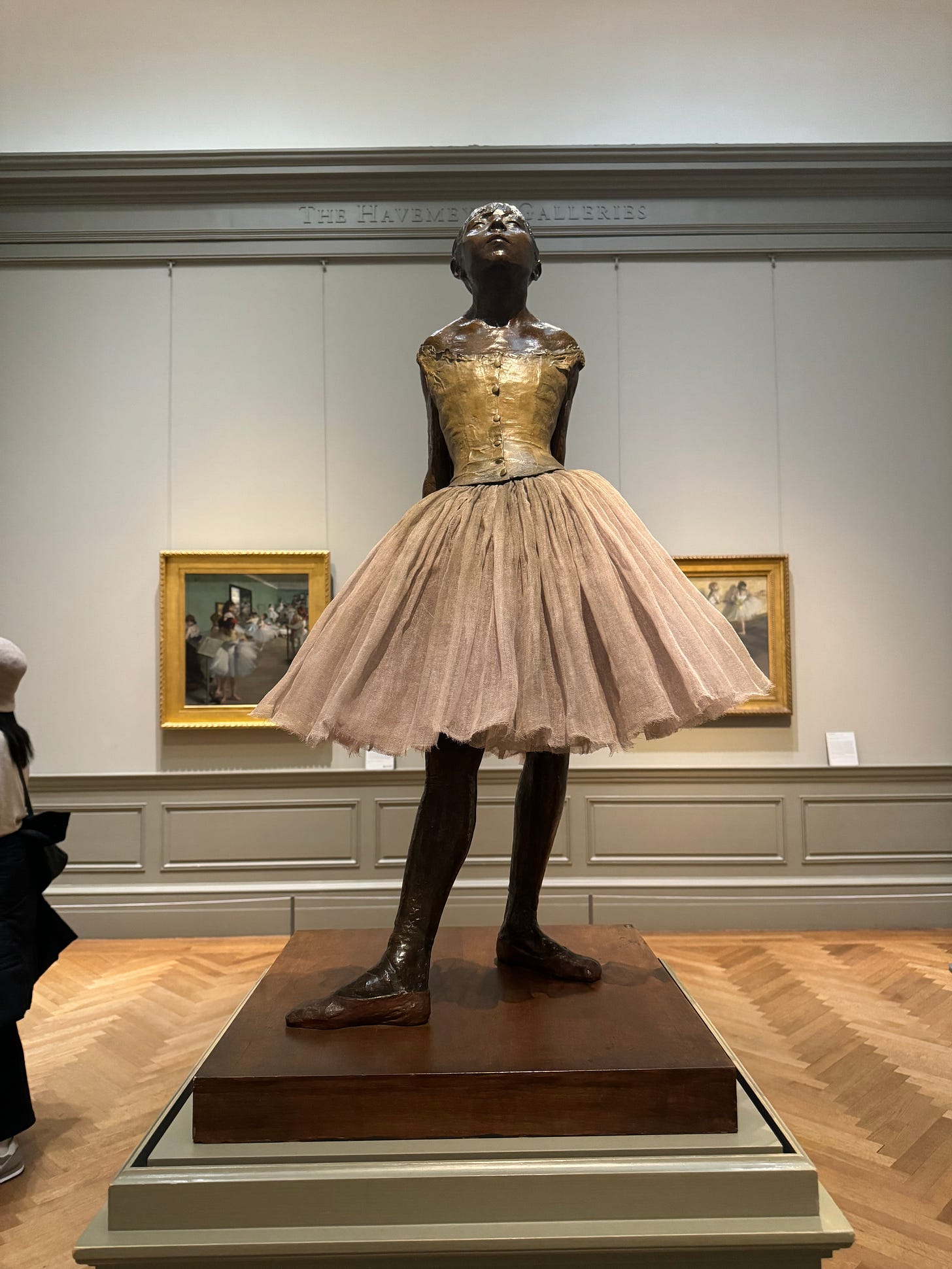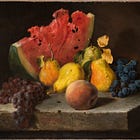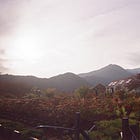I also filmed a YouTube video on this topic!
Growing up, I was artistic, interested in the performing arts and expressing myself through fashion and drawing. At the start of the year, however, I realized that a large chasm had formed between me and my creative self.
Like swimming in the ocean, somehow I had ended up so far away from where I was when I first stepped into the water. Finding my way back was disorienting. Looking for landmarks, like a rainbow umbrella or a particularly impressive sandcastle, I was determined to head home even as the waves pushed and pulled me along. At some point, though, I stopped resisting. I started floating.
On my journey, I received guidance from The Artist’s Way. For those who are unfamiliar, The Artist’s Way is a 12-week program that helps you unblock your creativity. The program has many writing prompts, but the core tenants include: Morning Pages, which is three pages of stream-of-consciousness journaling each morning, as well as a weekly solo Artist Date, in which you go to a museum, thrift store or some other interesting place by yourself and get curious about the things around you.
The Artist’s Way played a huge role in my artistic recovery but I was also inspired by other ways of thinking as I made by way home. Here are seven things that I learned.
Notice your thoughts
Also known as metacognition, noticing and writing down thoughts can help to identify thought patterns. In the words of psychologist Carl Rogers, “The curious paradox is that when I accept myself just as I am, then I can change.” When I started noticing my thoughts, without the pressure to change anything, I realized that many of the thoughts were so negative. With a web of negative thoughts in my mind, I was unsurprisingly feeling negative emotions.
But before I could change my thoughts, I first had to develop an awareness and acceptance of my thoughts. By noticing the patterns, I identified a starting point from which I could begin to investigate, like seeing the check engine light on tells you where to look first.
We are all creative (surprise!)
I was initially skeptical about Cameron’s proclamation that each one of us is creative. She’s not the only one who thinks this, though. David Brooks, author of How to Know a Person, uses the cognitive neuroscience concept of “constructionism,” or the unique way each one of us processes the world, as an example of creativity. He writes,
if your mind has to do a lot of constructive work in order for you to see the physical objects in front of you, imagine how much work it has to undertake to construct your identity, your life story, your belief systems, your ideals.
By this definition, the act of being alive means that we are being creative.
Besides this big one, though, there were also a handful of other beliefs that Cameron includes that I had to keep reminding myself of, including: art is not stupid, it's our God-given right and duty to express our creativity, it's the reason for our existence and being creative is not indulgent behavior.
We do our Morning Pages not because we have to, but because we need to
Cameron writes:
Each day’s Morning Pages take a swipe at the blur you have kept between you and your real self. As your image becomes clearer, it may surprise you.
Even though I’ve finished the program, I still do Morning Pages because they pull so much out of me. They allow me to tap into a part of my mind that often gets lost in the shuffle of daily life. Like Cameron says, when the mind is fresh, a lot of truths can be uncovered.
When you’re first getting started, quantity > quality
If the hardest part is to get started, then the second hardest part is to keep going. Previously, I was so highly judgmental of anything that I created that hardly anything would ever see the light of day. But an idea out the door is better than a million in the mind.
Especially at first, we develop confidence in our identity as an artist by repeatedly creating and sharing our work. Through this repetition, we learn to be less judgmental of our art and give ourselves the chance to one day become a great artist. In the words of Cameron, “God, you take care of the quality, I’ll take care of the quantity.”
Let your elephant lead
In The Happiness Hypothesis, author Jonathan Haidt uses the analogy of an elephant vs rider to describe the two types of processing that we have, which are emotion and intuition vs rational and critical thinking, respectively. We may often favor the rider over the elephant because we believe it to be smarter. And our ego may nod in agreement.
But in order to access more of our creativity, we need to be more in touch with our elephant. This can be tough, though, because in comparison to the rider, the elephant seems more unwieldy and uncontrollable.
I started to realize, however, that the elephant knows things that the rider does not. The elephant represents those moments when you just know, somehow. When you’re deciding between two colored shirts and your eyes keep darting to the yellow one. When you’re driving around streets in the town you grew up in, trying to find a restaurant, and you feel your hands turn the steering wheel right. For me, it’s when I don’t think I’ve memorized some ballet choreography, but my feet do, somehow. Letting my elephant lead was how I began to float.
Your new life will cost you your old one
Einstein said, "We cannot solve our problems with the same thinking we used when we created them." The same idea applies if you replace “thinking” with “consciousness.” I think that in order to change who you are, your consciousness must shift; you must adopt a new mental model of yourself and the world and act in a manner more aligned with who you are trying to become.
Once a caterpillar becomes a butterfly, it is both phenotypically and behaviorally different. It may at first feel strange to embody this new sense of self — perhaps even scary to leave what you’ve known behind — but it’s by definition part of becoming your new self.
Life is one big Artist’s Date
Have some fun!!! It's not so serious. Laugh. Dance. Play. Surf. Run. Smile. Connect. Say hello. Stay open.
Kurt Vonnegut said it best: "...we are here on Earth to fart around, and don't let anybody tell you any different ... We're dancing animals. How beautiful it is to get up and go do something."
If you enjoyed reading this article and want to support the newsletter, you can buy me a coffee here <3






Yes, you are a great artist from the beginning! Very inspiring!